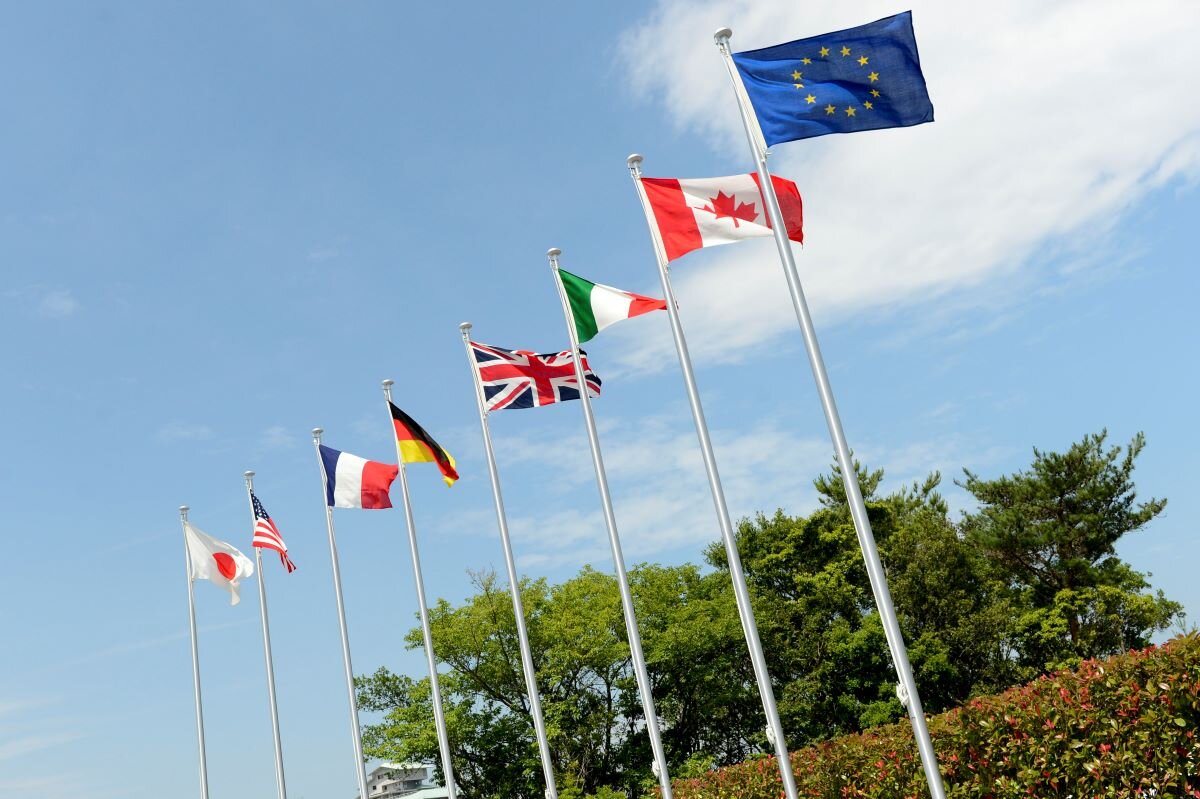On Sunday, G7 leaders have the chance to set out a bold plan for developing countries to access the finance they need to wean themselves off unstable energy sources – fossil fuels.
At their 2021 summit last June and again in December, the G7 set the ambition, promising “a step change in our approach to financing quality and sustainable infrastructure”.
But leaders now have to turn this commitment into action.
For obvious reasons, political attention has been focused elsewhere recently. Some commentators may be expecting the G7 to play a lacklustre hand on climate and development in the next few days. But it is still possible for G7 leaders to deliver something worthwhile.
It must be ambitious; anything less would fail to “scale up from billions to trillions in finance”, to borrow the phrase from the G7’s statement in December. At the moment, the pace of investment in sustainable infrastructure in developing economies is far too slow: developing countries (excluding China) invested just $64.3 billion in renewable energy in 2021 according to BloombergNEF.
G7 leaders need to deliver a new mechanism, that won’t get stuck in national legislatures. This new mechanism must mobilise the institutional investor capital that is already backing clean energy in wealthy countries, but is largely avoiding the developing world economies because of perceived political, currency and counterparty risks. It must happen in a way that does not leave renewables projects in developing countries with prohibitive financing costs.
To achieve this, the mechanism must:
- Result in more blended capital – the most potent mix of donor and private sector money.
- Add to the highly promising Just Energy Transition Partnership programme. This has already been launched for South Africa, and is expected to be extended to India, Indonesia and other coal-heavy countries that are aiming to curb fossil fuel emissions.
- Offer a new regionalised structure of guarantees for mobilising public and private sector investments in the clean energy transition. The challenge is to move from clean infrastructure projects in developing countries being seen as high-risk to a new rating of ‘investment grade’. Investors need to be able to aggregate investments, rather than having to do due diligence on a multiplicity of individual projects.
- Bring down the credit costs of renewables projects in developing countries, to remove the prohibitive financing costs they currently face.
If managed skilfully, hazards for private sector investors such as breach of contract can recede. This requires guarantees, but which would only hit donor budgets under the rare circumstances that they are called in.
There are signs that the beginnings of a G7 global infrastructure investment initiative may emerge at Elmau. President Biden’s National Security Advisor Jake Sullivan teased media with news that Biden will announce such an initiative. It could amount to hundreds of billions of dollars in G7 investments, based on “relatively modest” direct US budget allocations.
However, there remain questions of quantity and quality: whether the infrastructure will have adequate climate focus, and whether it will have teeth in terms of a sufficient financial envelope to narrow the trillions investment gap. Past US and G7 efforts lacked the financial firepower to achieve the grand scale necessitated by the climate crisis. Media commentators close to the Chinese state have already criticized the announcement pre-emptively, saying: “Biden’s latest pie in the sky once again lacks any filling”.
The EU and other climate-ambitious G7 countries should advocate for adequate financial firepower and climate focus in the G7 infrastructure initiative. However, to do so they need to contribute a guarantee envelope that mirrors the US contribution to enable a joint G7 push, with sound burden-sharing mechanisms enabling ambition.
By crafting a G7 infrastructure model that has substance and plays to the strengths of its collective membership, the G7 can prove its critics wrong. Now more than ever, a united front is needed.


